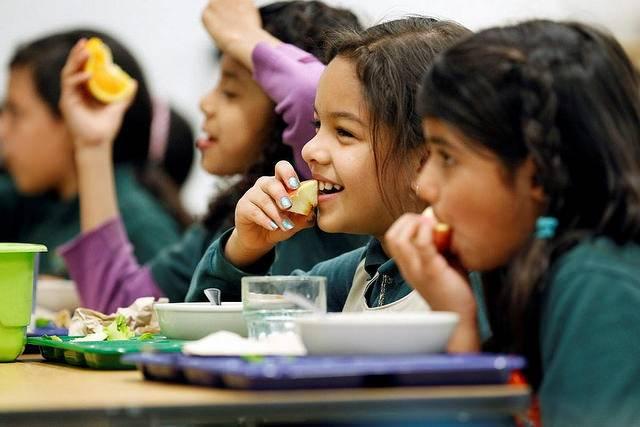
By Tarrah McCreary
Food belongs in stomachs, not in landfills. But unfortunately, an estimated 1 billion food items are discarded by K-12 students across the country each year, according to K12 Food Rescue.
As a socially responsible partner to school districts, Chartwells K12 wanted to do our part to ensure the healthy, great-tasting meals we serve are nourishing our students and community. So, last spring, we implemented a food rescue program at one of our schools in Indiana. After only five months, the food rescue program saw incredible success amongst middle- and high-school students – we rescued more than 11,200 food items!
How exactly are we 'rescuing' food? Kids in lunchrooms across America are tossing out perfectly good food – apples, juice boxes, unopened string cheeses, etc. Whether the child was full or just didn’t have time to eat it (they’re kids – who knows!), we wanted to put a stop to this in our café.
Chartwells K12 partnered with K12 Food Rescue to provide students with an alternative to discarding uneaten food. K12 Food Rescue provides us with bins that are set up in the school’s cafés where students can place certain uneaten or unopened items. Then, instead of being discarded, the food is brought to local charities.
What is truly unique about this program is it’s a student-led initiative. The students are responsible for managing the program; they oversee the collection process; and they encourage their peers to donate. Because it empowers students to make a real impact, we’ve found they’re more excited, eager and inclined to help. Not only are we reducing waste, but our students are also learning valuable lessons about sustainability and leadership that they’ll carry with them both inside and outside of the café walls.
The benefit of this is two-fold: First, we’re giving back to the local community. Second, we’re following our mission of sustainability by helping reduce waste and pollution. The more than 11,200 food items rescued thus far translates to about 2,250 meals and reduces carbon equivalent emissions by 1,400 pounds. That’s a huge impact for a district of 3,000 students!
While the execution of this program is simple, the implications for the students are far-reaching. Here are three reasons to give something similar a try at your own school district.
1. Instill knowledge
Many children, especially elementary-level students, don’t realize the impact they personally have on the environment. Start by making them aware of their personal choices and what they can do to contribute to a greener community.
This is also a good opportunity to teach children about giving back. 'Rescuing' food items provides a tangible example to help kids connect the dots on how they can help others within their community.
2. Develop leadership skills
The food rescue program is also an opportunity to empower individual students with leadership roles. While the exact responsibilities of food rescue student leader or leaders can vary, their role is the same at its core. Student leaders help collect and track all rescued food items and encourage their fellow students to further participate in the program.
The program also inspired positive peer pressure: Many students remind their friends not to throw out their food and instead place it in the donation bins. Since the program started, the number of students participating has steadily increased.
The student leadership aspect of this program is key and a big reason why it’s so successful. It helps the students feel empowered and gives them ownership of what to do with their uneaten food and where it actually goes. Without it, many might see it as another school-mandated initiative and not feel as much pride in their good work.
3. Showcase results
Finally, it’s important for students to see the results of their hard work in order to stay engaged. Provide regular updates on the progress of the food rescue program, share when milestones have been met, and keep students informed on the most current stats for their school and district.
K12 Food Rescue sets up partner schools with an online dashboard that gives kids a quick glance at their monthly food rescue stats. The kids are always excited to see the monthly metrics and work hard to top the previous months’ results.
The bottom line
The food rescue program we implemented has been incredibly successful, and we feel it can be easily replicated by students across the country. We’re excited to take our program even further in 2017 by expanding our student leadership opportunities, turning the program into a formal club, and bringing it to more Chartwells K12 schools around the country.
Image credit: 1) Flickr/U.S. Department of Agriculture; 2) Courtesy of the author
Tarrah McCreary is a resident dietitian at Chartwells K12, a provider of dining services for school districts across the country. Chartwells K12 is built on decades of food and education experience and driven by top culinary, nutrition, wellness, and sustainability talent.
TriplePundit has published articles from over 1000 contributors. If you'd like to be a guest author, please get in touch!














